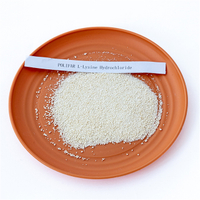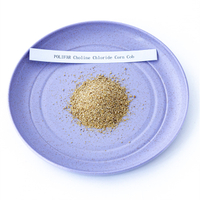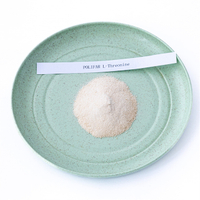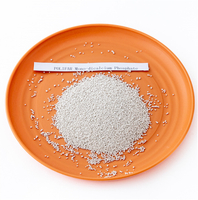Views: 0 Author: Site Editor Publish Time: 2022-09-29 Origin: Site








According to statistics, 10% -20% of the food lost in the world is discarded due to various corruptions. Foods contaminated by microorganisms not only cause economic and image losses to the manufacturers, but also toxins produced by microorganisms in the food will damage the health of consumers. Food preservatives are a type of food additives that prevent food spoilage due to the action of microorganisms and prolong the shelf life of food. Its anti-corrosion mechanism is mainly to reduce the water activity of the product, reduce the PH of the product, act on the specific structural parts of the microorganism, destroy the growth of the microorganism or the normal progress of the metabolic system, thereby inhibiting the growth of the microorganism and prolonging the shelf life of the product.
Meat products are rich in protein and water, and have strict requirements on the storage environment. It is highly susceptible to the influence of microorganisms, causing product spoilage and causing huge economic losses to meat processing enterprises. Therefore, the preservation of meat products is particularly important. Meat and meat products are inevitably contaminated by microorganisms in the environment and cause spoilage in all aspects of production, packaging, storage, transportation, and sales. Therefore, choosing the right amount of safe and efficient preservatives is a key part of the production of meat and meat products.
At present, there are many varieties of food preservatives used in the world. Food preservatives are divided into two categories: chemical preservatives and natural preservatives. Chemical preservatives are further divided into inorganic preservatives and organic preservatives. Among them, only sorbic acid and its potassium salt, sodium diacetate, nisin, natamycin and glycerol monocaprylate are allowed to be used in meat products. There are also some additives that are added for other purposes but have a preservative effect on meat products such as phosphates (quality improvers), nitrates and nitrites (coloring agents), sodium lactate (humectants, antioxidant synergists and flavors) enhancer), etc.

The following is a brief introduction to the application of some preservatives in meat products.
1. Sorbic acid and its salts
2. Nisin
3. Natamycin
4. Sodium lactate
5. Phosphate
6. Nitrates and nitrites
Sorbic acid is unsaturated hexacarbonic acid, colorless needle crystal or white crystalline powder, tasteless and odorless, its molecular formula is C6H8O2, and its molecular weight is 112.1. Soluble in various organic solvents, slightly soluble in water, and its potassium and sodium salts are easily soluble in water. When using, it can be dissolved in ethanol first, and then added to food. Be careful not to use copper or iron containers when dissolving. Potassium sorbate is the potassium salt of sorbic acid, a white, almost odorless powder, or granular, so it is extremely low in dust. Calcium sorbate is the calcium salt of sorbic acid, a nearly odorless white powder.
Sorbic acid and its salt potassium sorbate are widely used in meat products. The main antibacterial effect is that it can combine with the sulfur group in the microbial enzyme system, thereby destroying the activity of microbial enzymes, and achieving the purpose of inhibiting microbial proliferation and preservation. Sorbic acid and potassium sorbate have inhibitory effects on bacteria, yeasts and molds, and also have a certain inhibitory effect on Gram-positive bacteria, but are almost ineffective against anaerobic microorganisms and Lactobacillus acidophilus. Its antiseptic effect is wider than that of benzoic acid. It is suitable for use when the pH value is below 5. The antibacterial effect decreases with the increase of the pH value, and the antibacterial effect is the best when the pH value is 3. Potassium sorbate can be used alone in fresh meat preservation, or combined with phosphate and acetic acid.
Potassium sorbate soaked fresh pork and fresh chicken can prolong the shelf life and have no adverse effect on the sensory characteristics after cooking. Since sorbic acid and its salts have a significant inhibitory effect on botulinum, its application in sausages and bacon products can reduce the amount of nitrite. Adding potassium sorbate to cured bacon products reduces the amount of sodium nitrite, which reduces the potential for the formation of carcinogenic nitrosamines. At the same time, it has no adverse effect on the color and fragrance of the product. Dry and hard sausages, smoked ham and jerky and similar products can be soaked in 5-20% potassium sorbate solution to prevent mold corrosion.
Pay attention to the hygiene of the food when using it. If the food has been seriously polluted, the addition of sorbate will not have a preservative effect, and the bacteria can use the sorbate as a nutrient to make the food spoil faster. Since sorbic acid is metabolized in the body to produce carbon dioxide and water, it is not harmful to humans. Generally considered to be the most suitable food preservatives.
Nisin is a polypeptide substance prepared from the fermentation broth of Streptococcus lactis and consists of 34 amino acid residues of the peptide chain. It is a highly efficient, non-toxic, safe, and natural biological preservative with no side effects. It is easily decomposed by protease after being ingested in the gastrointestinal tract. In addition to the general properties of polypeptides, it also has increased solubility under acidic conditions. Its acid resistance and heat resistance are excellent, and it can inhibit many Gram-positive bacteria that cause food spoilage, such as Leuconostoc, Lactobacillus, Staphylococcus, Pediococcus, etc., especially for spore-producing bacteria, such as Bacillus, Clostridium Bacillus.
Nisin has long been used in meat products abroad. The U.S. Federal Meat Inspection Regulations recommend Nisin as a preservative for dry and semi-dried sausages. Nisin is the most widely studied bacteriocin so far, which can inhibit the growth of most G+ bacteria, including Bacillus spp., heat-resistant spoilage bacteria, Clostridium sporogenes, etc. But not effective against yeast and mold. In addition, Nisin can be used as a substitute or adjuvant for nitrate in cured meat products to reduce or avoid the threat of nitrosamines to human health. Adding Nisin to sausage can reduce the amount of nitrite and effectively prolong the shelf life of sausage. The application of Nisin in Chinese meat products is relatively late. At present, it is often used in fish and meat. Without affecting the color and preservative effect of the meat, the amount of nitrate used can be significantly reduced to effectively prevent the formation of Clostridium botulinum toxin.

Since Nisin is a narrow-spectrum antibiotic, it can only kill or inhibit G+ bacteria, and has no effect on G- bacteria, yeast and mold, so Nisin alone may not have a good effect. Nisin is often used in combination with several other sterilization or bacteriostatic methods.
1) Nisin combined with heat treatment. Adding a small amount of Nisin can greatly reduce the sterilization temperature and time, improve the thermal sensitivity of spoilage microorganisms, and prolong the shelf life of meat.
2) Nisin is used in combination with chemical preservatives such as sorbic acid. Sorbic acid mainly inhibits mold and yeast, and it can overcome the shortcomings of Nisin as a narrow-spectrum antibacterial agent when used in conjunction with aerobic bacteria.
3) Nisin combined with radiation, ultraviolet, microwave and other sterilization methods can enhance the bacteriostatic effect. Moreover, Nisin is a hydrophobic peptide. Lipid components in meat, such as phospholipids, can strongly interact with Nisin and affect the distribution of Nisin in these products.
Natamycin, also known as Pimaricin, is an important polyene antibiotic that can be fermented by Streptomyces-natalensis and Strepto-myceschatanoogensis. It is an efficient and safe new biological preservative, which has extensive and powerful antibacterial and antiseptic effects on many foods such as meat products, beverages, fruits, baked goods, etc. In 1982, the US FDA officially approved natamycin as a food preservative. In 1985, FDA/WHO gave the ADI value of natamycin, and stipulated that the daily dietary allowance was 0.3 mg/kg.
Natamycin is a white to milky white, odorless and tasteless crystalline powder. The relative molecular weight is 665.7, and the molecule is an active cyclic tetraene compound. Its melting point is about 280°C, and it is insoluble in water and various organic solvents. At room temperature, approximately 50 mg of natamycin can be dissolved in 1 L of pure water. Soluble in dilute acid, glacial acetic acid and dimethylformamide. When the pH value is lower than 3 or higher than 9, the solubility will increase.
In terms of meat preservation, soaking and spraying can be used to prevent mold growth. When containing 4 µg of Natamycin per square centimeter, a safe and effective bacteriostatic level can be achieved. Generally, Natamycin is prepared into (150~300) mg/kg suspension for soaking and spraying on the surface of meat products, which can achieve safe and effective bacteriostatic purpose. In terms of sausages, soaking or spraying the Natamycin suspension on the surface of the stuffed sausages can effectively prevent mold growth on the sausage surface. Among the cured products, such as cured chicken and cured meat, it can be mixed with a certain concentration of solution during curing, or sprayed with 0.1% Natamycin suspension before drying.
Sodium lactate has been widely used in meat products as a humectant, antioxidant synergist and flavor enhancer. But more and more evidence shows that sodium lactate has bacteriostatic effect, and it is recognized by more and more people. Sodium lactate is a new type of meat product preservative and preservative. It is a derivative prepared from lactic acid, which is processed by advanced chemical technology after being fermented by lactic acid bacteria with grain as the base material. The molecular formula is CH3CHOHCOONa and the molecular weight is 112.06. It is a colorless or slightly yellow transparent syrupy liquid, which can be fully mixed with water, oil and various food additives. It is approved by the U.S. Food and Drug Administration as a "safe and non-toxic substance" and can be used directly in food. Sodium lactate is an organic weak acid salt, but in low-temperature meat products, it can play the role of antiseptic, fresh-keeping, prolonging shelf life and increasing food safety.
According to a large number of domestic and foreign research results, the use of sodium lactate alone in sausages has the same antiseptic effect as sodium nitrite. When used together with 2.5% sodium lactate and 150ppm nisin, the shelf life is doubled compared with that of sodium nitrite. Sodium lactate has a slightly mild salty taste, and the amount of salt used in the production process should be appropriately reduced by about 10% of the amount of sodium lactate.

In meat products, phosphate is often used as a quality improver to exert its antiseptic and fresh-keeping effect. It can significantly improve the water retention of meat products. Utilize its complexation to delay the oxidative rancidity of meat products and enhance the antibacterial effect of preservatives. In 1982, the United States Department of Agriculture stipulated that 0.5% phosphate can be added to meat products. Since then phosphate has become an indispensable additive in the meat industry.
Nitrates and nitrites are widely used in the preservation of meat and fish. It can inhibit the growth of Clostridium botulinum, and make meat products appear red and flavorful. However, nitrate and nitrite will interact with human blood to form methemoglobin, which will make the blood lose its oxygen-carrying function. If the rescue is not timely, it will be life-threatening. Not only that, nitrite will interact with secondary amines to form nitrosamines, which can seriously endanger human health. Therefore, the amount of nitrate and nitrite must be strictly controlled.
In the preservative process of meat products, it is often not a single preservative that is used. Instead, a variety of preservatives are used in combination, that is, the use of composite preservatives. Polifar is an expert in food additives. We pay more attention to the health and safety of food while paying attention to the color and aroma of food. If you want to know more about preservatives, such as sodium benzoate, calcium propionate and other products, welcome to consult Polifar!






